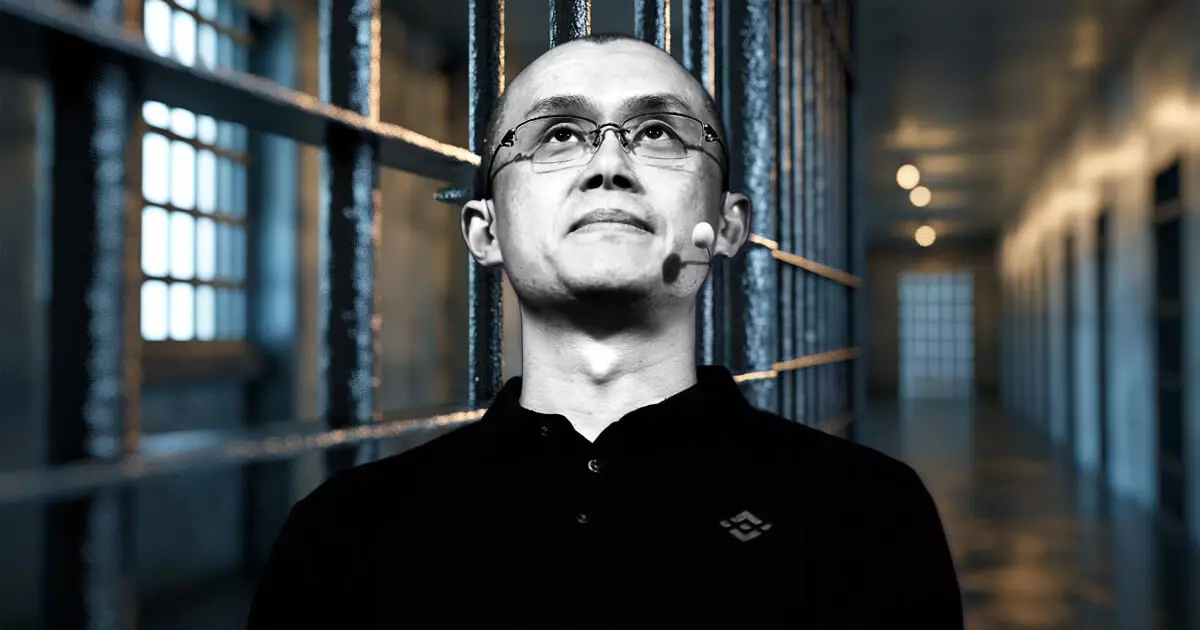Changpeng Zhao, the prominent co-founder of Binance, is slated to be released from US custody on September 29, following a brief four-month sentence. His recent transfer to the Long Beach Residential Reentry Management (RRM) facility underscores the transitional stage of his incarceration, which is specifically designed to prepare inmates for reintegration into society. Zhao’s journey through this legal turmoil serves as a pivotal moment, not just for him personally, but for the broader cryptocurrency ecosystem, particularly for Binance—which has faced myriad challenges during his legal proceedings.
Zhao and Binance’s legal issues began in November with allegations of federal law violations centered around the Bank Secrecy Act. The government’s assertion that Zhao failed to implement a sufficient anti-money laundering program highlights not only the regulatory scrutiny surrounding cryptocurrency exchanges but also the inherent risks involved in operating within a decentralized financial framework. Binance was specifically accused of facilitating transactions tied to illicit activities, particularly those involving U.S. citizens and sanctioned regions such as Iran. The repercussions of these allegations were severe; the settlement mandated that Binance pay $4.3 billion in fines, with Zhao personally responsible for an additional $50 million.
The fallout from Zhao’s culpability does not end with his resignation as CEO; it further complicates Binance’s operational integrity and public image. Even after Zhao steps down, his substantial ownership of approximately 90% of the company looms over its future, creating a perception of lingering influence that could destabilize investor confidence.
While Zhao’s legal saga appears to be winding down, Binance is still grappling with the implications of another significant challenge posed by the U.S. Securities and Exchange Commission (SEC). Recently, the agency filed an amended complaint that maintained its position on Binance’s alleged violations of federal securities laws. What’s particularly concerning for the platform is the SEC’s argument surrounding the BNB token, stating it was marketed and sold akin to a security—a claim that directly challenges the classification of numerous cryptocurrency offerings.
The SEC’s stance paints Binance not just as a marketplace for trading cryptocurrencies but also as a promoter that potentially manipulates public perception by republishing information about asset performance. Given the regulatory landscape’s growing complexity, Binance’s ability to navigate these waters remains questionable.
The turbulence surrounding Zhao’s release and Binance’s ongoing legal battles could have far-reaching implications for the cryptocurrency industry altogether. Increased regulatory measures may soon become the norm as authorities attempt to impose stricter oversight on trading platforms. Investors, both new and seasoned, will need to remain vigilant in understanding how these developments can impact market dynamics.
While Zhao’s personal legal ordeal is approaching its end, the shadow of uncertainty continues to loom over Binance and the wider cryptocurrency sector. As regulatory frameworks evolve, the endurance of entities like Binance may hinge not only on legal compliance but also on public trust—a precarious balance that demands continuous vigilance and adaptability.













